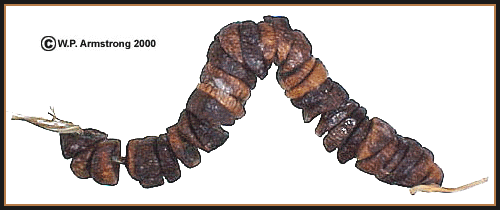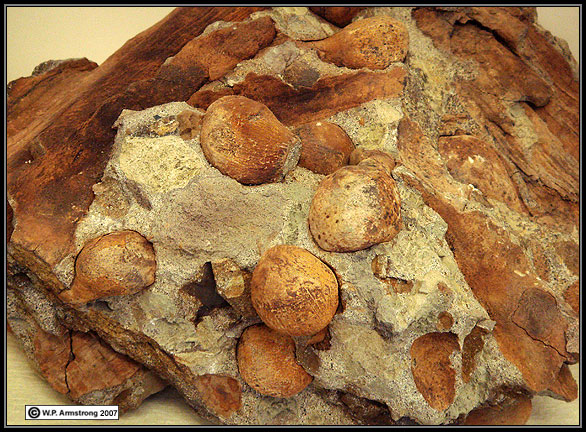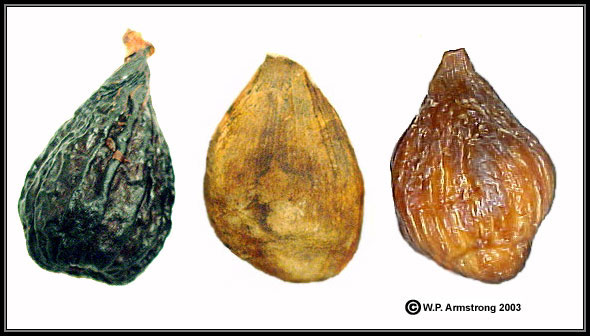|
Ancient Figs Of The Holy Land

Fig Trees Of The Holy LandOne of the earliest records of any fruit eaten by people of the Middle East is the common fig (Ficus carica). Remnants of figs have been found in archeological excavations dating back to the Neolithic era, about 1000 BM (Before Moses). The fig is the first tree mentioned in the Bible in the story of Adam and Eve. Some biblical scholars think the fig, and not the apple, was the forbidden fruit picked by Eve in the Garden of Eden. Chauvinistic males also believe the penalty for this unauthorized fruit-picking was a sorrowful menstrual cycle. The scratchy leaves of this tree were reportedly used to cover the genitalia of the first humans. The fig is native to Caria--an ancient region of Asia Minor between the Mediterranean and Black Seas. It grows readily from seeds and cuttings, especially along water courses and rich, bottom lands, and was introduced by people throughout the Holy Land. Fig trees provided shade, fire wood and several crops of nourishing fruit a year. Dried figs could be squeezed into loafs or placed on strings and used as food during long, arduous journeys across the desert.

The actual edible "fruit" of a fig tree is called a syconium--a hollow structure lined on the inside with hundreds of tiny unisexual flowers. A tiny female wasp (Blastophaga psenes) enters an opening on the syconium to pollinate the flowers. In Ficus carica, only the syconia of female trees are edible, and without pollination they typically do not ripen and fall from the branches. [There are parthenocarpic varieties in which the seedless syconia ripen without pollination.] Male trees, called caprifigs, produce inedible syconia containing wasps and pollen-bearing male flowers. [Capri refers to goat and the syconia were apparently fed to livestock.] During the late 1800s, Calimyrna fig growers in California were puzzled why their trees would not set fruit. They discovered that the female trees needed the fig wasp and male caprifigs from the Old World. Each June in California's hot Central Valley, bags of wasp-bearing caprifigs are placed in the Calimyrna orchards. This amazing pollination process is called caprification and the crunchy, seed-bearing syconia have a superior nutty flavor. [Premium fig newtons are made from caprified figs and contain numerous seed-bearing nutlets or endocarps.]
One additional note about Ficus carica . The New Testament tells of a fig tree that Jesus came upon on the outskirts of Jerusalem in spring. Although it was fully leaved out, the tree bore no ripe fruit. Apparently Jesus was hungry (and perhaps had a low blood sugar level), so he said unto it, "let no fruit grow on thee henceforward for ever," and the tree withered away (Matthew 21: 18-19). This was a remarkable feat for a man with only one set of maternal chromosomes. From a botanical perspective, this tree had no mature fruit because spring was simply too early in the season, or perhaps it was a caprifig or an unpollinated female tree. Another little-known fig of the Middle East is the sycomore fig (Ficus sycomorus). Although it is native to eastern Central Africa, the sycomore fig was carried north to the Middle East by 3000 BC. Without its native pollinator wasp the trees did not set fruit. Early farmers in this region learned how to induce parthenocarpy by gashing the syconia with a knife. Within 3-4 days the hard, green syconia enlarge and become sweet and fleshy. Gashed sycomore figs have been found in ancient tombs and are depicted in ancient bas-reliefs. Some biblical scholars think the phrase "gatherer of sycomore fruit" (Amos 7:14) actually means "piercer of sycomore fruit." The gashed figs produce ethylene gas which hastens the ripening process. Ethylene gas is also used on green bananas before they reach your supermarket. So the next time you bite into a fig newton, think about all the history of this tree and its symbiotic pollinator wasp, and how it affected our lives by providing food and itchy leaves for the first naked humans, a monthly calendar (reminder) for ladies between puberty and menopause, and the first case of PMS.
Sacred Fig Trees In Other Parts Of The WorldFigs were not only revered by Christians, Jews and Moslems of the Middle East. There are at least 1,000 species of Ficus in the world, mostly in tropical countries, and they are considered sacred in some cultures. In fact, the fig tree of the Garden of Eden may have been one of these other lovely species. In the tropical rain forest "strangler fig" seeds germinate high on the forest canopy and send numerous aerial roots to the ground far below. Like a botanical boa constrictor the serpentine roots gradually wrap around the limbs and trunk of the support tree, constricting vital phloem and cambial layers and eventually shading out the host. Both Aztecs and Mayans used bark from native strangler figs to make a kind of paper for the original Mexican codices. Thin strips of bark were pounded with a stone until a sheet of paper resulted, a process not unlike the production of papyrus paper by Egyptians. Fig trees are part of the poetry and romance of Central America, and they are intimately associated with daily life and are regarded with affection. The strangler fig or "amate" is the "arbol nacional" (national tree) of El Salvador. Village markets are often held in the shade of a giant fig or kapok tree (Ceiba pentandra).
In banyan figs, enlarged aerial roots extend from the branches to the ground, giving the tree the unusual appearance of being supported by pillars. By this manner of growth the tree is able to develop a huge spreading crown, and many Indian banyans (Ficus bengalensis) are of immense size and great antiquity. Some of these banyans start out as "stranglers" high on the branches of other trees. One of the largest trees on record grew at the Calcutta Botanic Garden. This famous tree had 1,000 prop roots and covered an area of four acres. The canopy of some banyans provides shade for entire villages. Alexander the Great reportedly camped with an army of 7,000 soldiers under a banyan. Hindus regard the banyan as sacred, for it is said that Buddha once meditated beneath one. The English name "banyan" comes from the "banians," or Hindu merchants who set up markets in the shade of these enormous multi-trunked trees. An unusual use for banyans of the Sikkim-Himalaya region employs "living bridges" across streams and gorges. Aerial roots from fig trees on opposite banks are tied together and then fuse (anastomose) and thicken. Probably the most revered tree in the world is Ficus religiosa, the sacred Bodhi, also known as Bo (from the Sinhalese Bo) of Burma, Ceylon and India. Siddhartha Gautama, the spiritual teacher and founder of Buddhism later known as Gautama Buddha, acheived enlightenment, or Bodhi, beneath this tree. It is said he sat under its shade for six years while he developed his philosophy of the meaning of existence. The term "Bodhi tree" is widely applied to existing trees, particularly the sacred fig growing at the Mahabodhi Temple at Bodh Gaya in the Indian State of Bihar. This tree is probably a direct descendant of the original tree that Buddha sat under. To this day, worshipers place gifts of flowers at the base of its trunk. The intricately-veined, skeletonized leaves of F. religiosa are often painted with lovely country scenes.
Banyans are not limited to India. On the scenic Islands of Tahiti and Moorea they cling to vertical volcanic cliffs, sending hundreds of aerial roots to the ground far below. Polynesian banyans also grow near native settlements and are considered sacred. The slender aerial roots were picked and used to treat skin cancer and other afflictions, and the inner bark was pounded into tapa cloth. A remarkable story from the Transvaal region of Africa tells of a Bakone village with 17 conical huts built above the reach of lions on the branches of one gigantic banyan.
How Ancient Are Figs (Ficus) In The Geologic Record?
How To Enjoy And Appreciate Figs:
|



